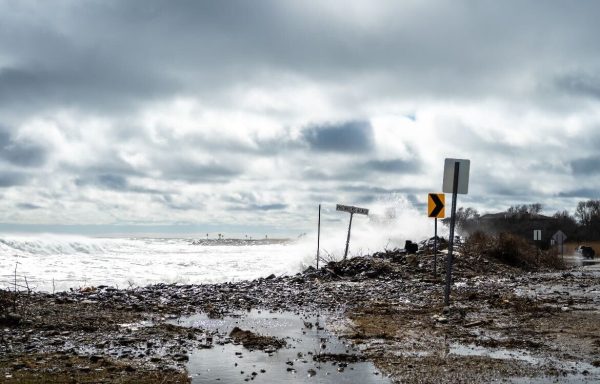New Hampshire drought lingers as summer approaches
May 7, 2021
New Hampshire’s drought conditions have improved substantially from the extreme dry-spell that much of the seacoast experienced in the fall. But University of New Hampshire (UNH) Fruit & Vegetable Production Field Specialist George Hamilton said he is still worried about the conditions, particularly a lack of snow in the winter which can lead to drought conditions in the spring.
Jim Griswold is an elk farmer in Lee and relies on wet conditions to be able to feed his herd.
“Last year was really tough,” said Griswold, “we ended up having to buy a great deal of hay, first time in twenty years ”
He said this year, while the overall conditions are better, his drinking water is lower than it should be in the spring. This could pose a problem, according to Griswold. He said a lower level of water in his well could result in high arsenic levels, which increase with less water in the well to dilute it.
“We’re watching it carefully. We are in abnormally dry conditions but I don’t think it’s been declared a drought yet,” said Griswold.
The National Oceanic and Atmospheric Administration (NOAA) defines abnormally dry as “short-term dryness slowing planting, growth of crops or pastures.” Whereas, an extreme drought is defined as “major crop/pasture losses and Widespread water shortages or restrictions.”
Deborah Fisher is another local farmer who shares a similar sentiment about the water levels.
“It’s not as wet as it would normally be this time of year but compared to last fall it’s much better,” said Fisher. She echoed Griswold, saying that the lack of moisture could be heavily attributed to the lack of snow the area received in the winter.
Hamilton is also worried that a drought will make customers less likely to buy local produce which may be perceived as being worse due to the doubt conditions. “We need to support local agriculture more in times of stress like it is now,” said Hamilton.
Another problem for agriculture, said Hamilton, is a pattern of increasingly extreme weather. “We had 3-4 years in a row where we have had a 20 year storm.” said Hamilton. These storms provide little agricultural value, he said.
According to New Hampshire Fish and Game, scientists are predicting a 14-20 percent increase in precipitation annually and as many as three times the extreme weather events. This will shift storms from more frequent and less severe to less frequent and more severe.
Despite these worries Griswold and Fisher remain hopeful for the future. “Spring is always a positive time. I am looking out over an orchard of apples and Asian pear trees that are just about to open up in blossoms, you can’t help but feel positive,” said Griswold.



























